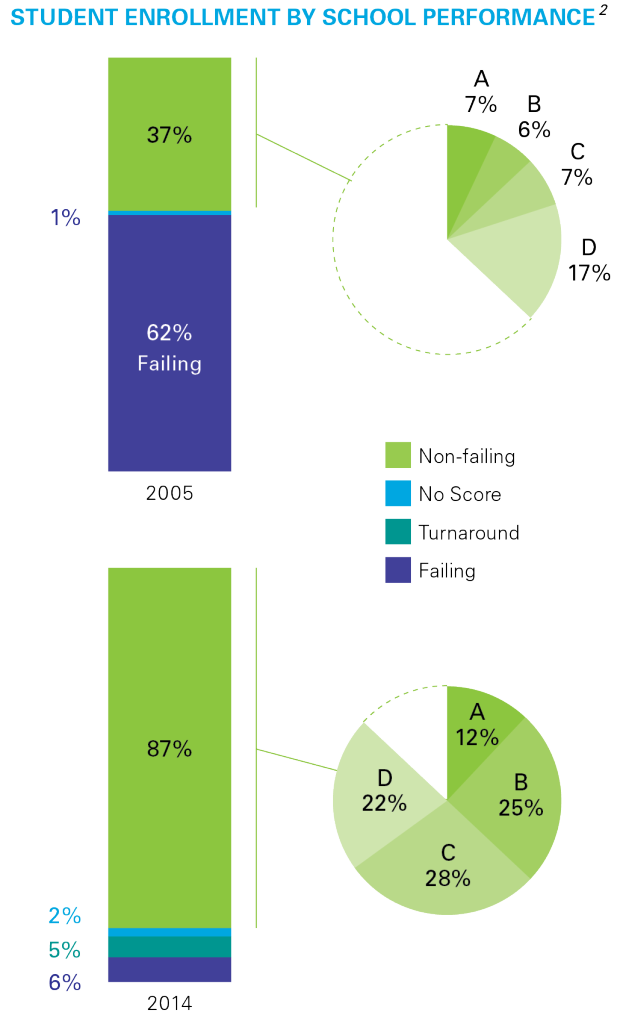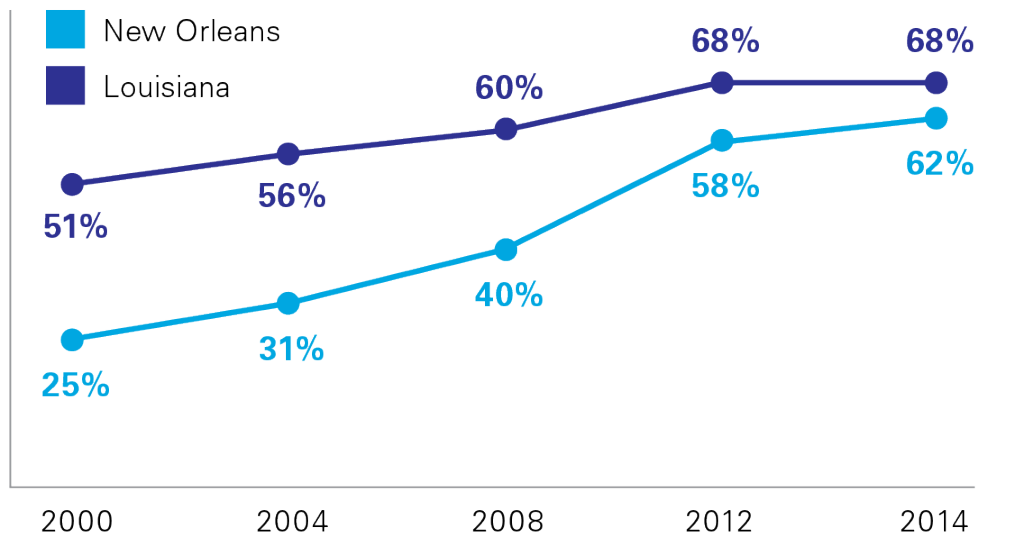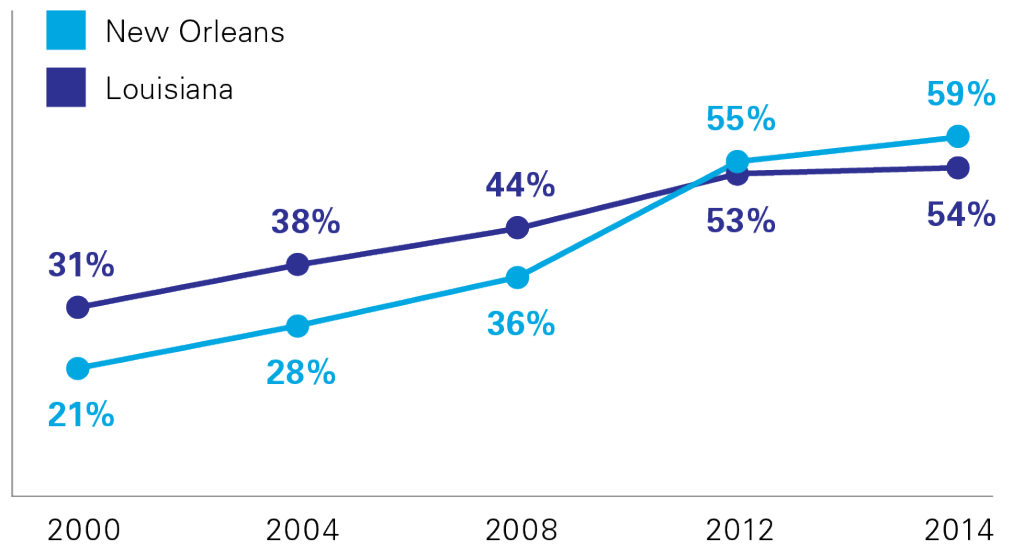p The state just released the 2014 ACT scores for public schools. Continuing our By the Numbers series, Educate Now! takes a look at high school performance.
ACT Performance
New Orleans has seen strong gains since 2005.
The growth in ACT scores comes even as the percentage of seniors taking the test has increased significantly. (The state now requires students to take the ACT as part of high school accountability; in 2005, students were not required to take the ACT.) Since 2005, as the percentage of seniors taking the ACT increased, New Orleans improved its composite score1 from 17 to 18.4, while the state declined from 19.8 to 19.2. Both RSD and OPSB have seen gains in their ACT scores2.
- During this time (2005 to 2014), the RSD improved its ACT average by 2 points, more than any other district in the state. It is one of only 5 districts that improved more than 1 point during this time.
- OPSB improved by 0.8 points.
ACT Scores Over Time
| |
Class of 2005 |
Class of 2014 |
Change |
|
OPSB
|
19.7 |
20.5 |
0.8 |
|
Schools transferred to RSD
|
14.4 |
16.4 |
2 |
|
New Orleans (OPSB + RSD)
|
17 |
18.4 |
1.4 |
|
Louisiana
|
19.8 |
19.2 |
– 0.6 |
If comparing performance, RSD schools serve a very different population than OPSB, with more African American students, more poor students, and more students with special needs. Some OPSB high schools have selective admissions, and only three of seven OPSB high schools participate in EnrollNOLA (OneApp). RSD data includes the alternative high schools in the city, and every RSD high school is open-admissions and participates in EnrollNOLA.
Continue reading →



